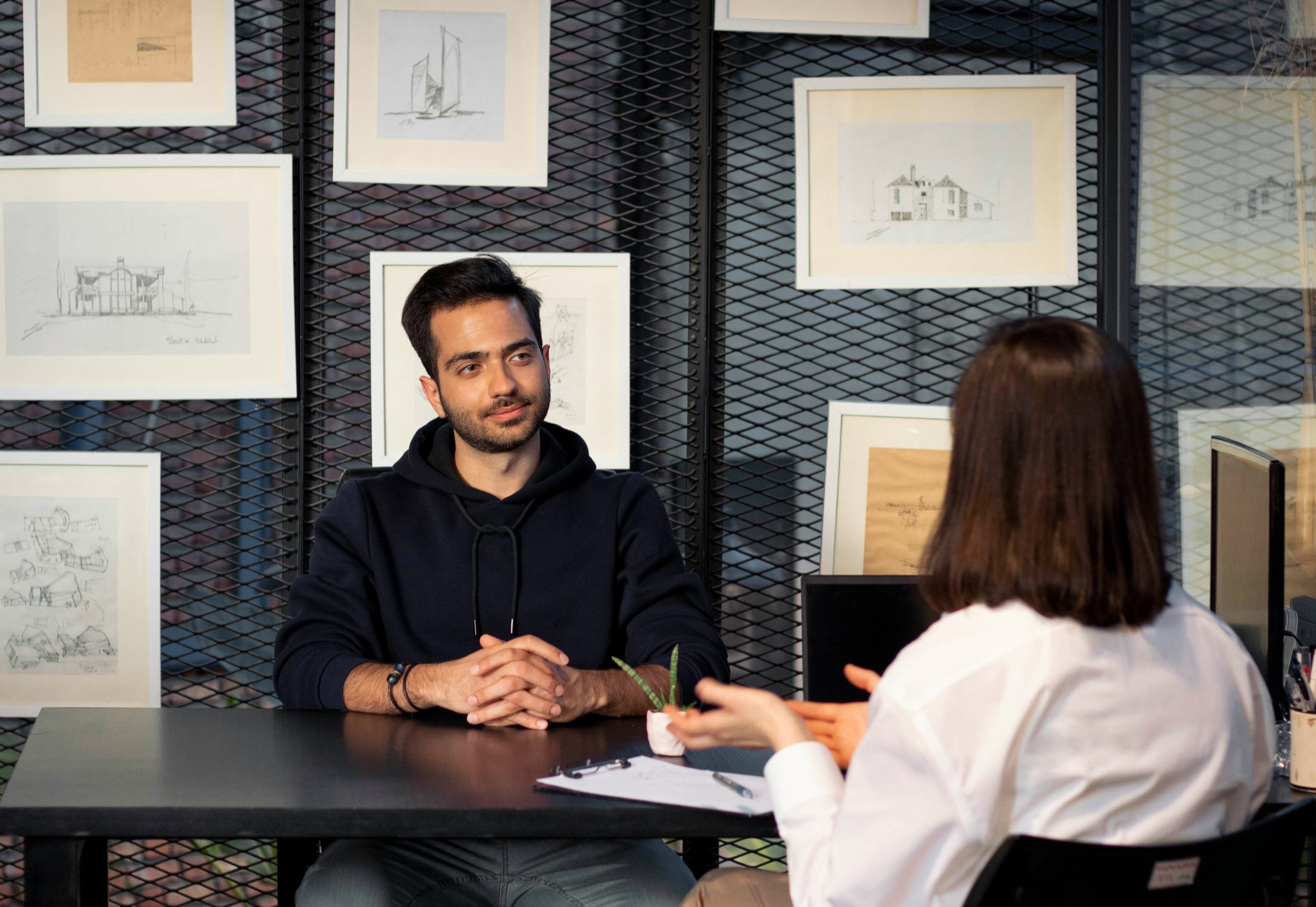
Subscribe for updates
Get talent acquisition best practices, trends, and news delivered directly to your inbox.
By entering your email, you agree to receive marketing emails from JobScore
The interview process is crucial for identifying and hiring the best candidate for your role, but things don’t always go as planned.
Sometimes, your top-choice candidate drops out of your recruitment process or declines your job offer. Other times, your new hire doesn’t live up to expectations.
While these situations aren’t entirely avoidable, subtle changes to your interview process can increase your chances of a successful hire.
Let’s explore some best practices around how to conduct an interview that results in better hiring outcomes.
Why an effective, engaging interview process matters
The impact of hiring decisions extends far beyond filling an open position. Getting it right can accelerate your company’s growth, while poor hiring decisions can have long-lasting negative effects.
Implementing effective interview strategies can help you:
Reduce time to hire and cost per hire
Streamlining your interview process and asking the right questions helps you identify qualified candidates more quickly and reduce the number of interviews needed. This efficiency not only saves valuable time but also decreases recruiting expenses such as advertising costs and employee hours dedicated to hiring.
Improve candidate experience and acceptance rates
A well-structured interview process creates a positive impression on candidates, making them more likely to accept offers and recommend your company to others. This enhanced reputation can help you build a strong talent pipeline and reduce the time needed to fill future positions.
Make more informed hiring decisions
Using structured interviews and evaluation scorecards helps reduce bias and ensures decisions are based on objective criteria rather than gut feelings. This approach leads to more reliable predictions of job performance and better hiring outcomes.
Build stronger, more cohesive teams
Assessing both technical skills and cultural fit can help you select candidates who will work well with existing team members and contribute positively to team dynamics.
Decrease employee turnover
Better hiring decisions often lead to improved job satisfaction and longer employee tenure. When candidates are properly evaluated for both skills and cultural alignment, they’re more likely to succeed in their roles and stay with your team long-term.
Preparing for the interview
The success of any interview largely depends on the preparation that happens before the candidate walks through your door. Taking time to properly prepare ensures you can conduct a focused, effective conversation that yields valuable insights about each candidate. This preparation phase is crucial for creating a consistent evaluation process that can be applied fairly across all candidates.
Build a structured interview before you meet any candidates
Structured interviews guide your hiring team to evaluate each of your candidates on the same criteria. This is helpful to streamline your process and make more consistent hiring decisions.
Meet with your hiring team to align around your ideal candidate profile and how each candidate will be evaluated.
Some best practices for building a structured interview include:
Prepare your candidates
Helping your candidates prepare for the interview is a great way to put them at ease so they can perform at their best.
Your hiring team can do this by ensuring that each candidate receives a detailed interview confirmation email that includes the:
Review the interview plan and candidate’s resume
Each interviewer should aside time before each interview to thoroughly review the interview plan and the candidate’s resume. This is a good time to tweak interview questions according to the candidate’s resume.
For example, let’s say you’re evaluating the candidate’s mastery of a software program and see it listed on their resume. Instead of asking if they have experience with that tool, say “I see you used [software] in your last role. Can you tell me how you used the tool?” Follow-up questions could include, “Did you use [software] in your day-to-day job, or log in every once in a while?” and “How did [software] enable you to do [task or project]?”
Crafting effective interview questions
Preparing thoughtful interview questions is one of the most critical elements of interview success. The right questions help you gather necessary information while demonstrating respect for your candidate’s time.
Technical interview questions
Technical questions verify specific skills and knowledge required for the role.
These questions should be tailored to the position level and specific requirements of the job. It’s important to go beyond basic qualifications to understand the depth and breadth of a candidate’s expertise.
For example, “Can you describe a project you completed using [software] and walk me through your approach?”
Assessments may also be used in addition to, or instead of, technical interview questions. This could involve coding exercises for developers, writing samples for marketing professionals, or design challenges for creative roles. Ensure these assessments are reasonable in terms of scope and time requirement.
Behavioral interview questions
Behavioral questions are based on the premise that past behavior is the best predictor of future performance.
Design open-ended questions that reveal how candidates have handled real situations in the past. These questions should align with a specific key competency required for success in the role.
For example, you can ask a leadership candidate to share ways they motivate and engage their team members, or ask them to tell you about a time they had to deliver difficult feedback.
Culture fit interview questions
Understanding how a candidate will integrate with your company culture is crucial for long-term success. However, it’s important to distinguish between culture fit and uniformity — you’re looking for candidates who will enhance your culture while bringing diverse perspectives and experiences.
These questions should focus on work style, values, and collaboration preferences rather than personal characteristics.
For example, assess how detail-oriented a candidate is by asking them to tell you about a time they make a mistake. Find out how they uncovered the mistake, what they did to correct it, and what they learned from the experience.
Interview questions to avoid
Certain topics and questions can expose your organization to legal liability if they could be construed as discriminatory. Understanding what not to ask is just as important as knowing what to ask during interviews.
Topics to stay away from include:
Conducting the interview
The actual interview is where all your preparation pays off. The way you conduct the interview can significantly impact both the quality of information you gather and the candidate experience.
Set the right tone
The first few minutes of an interview are crucial for creating an environment where candidates can perform their best. Your goal is to put candidates at ease while maintaining professionalism and setting clear expectations for the conversation. Remember that nervous candidates may not show their true capabilities, so creating a comfortable atmosphere is in everyone’s best interest.
Key practices include:
Provide a smooth, engaging interview experience
A well-run interview experience helps you thoroughly evaluate candidates — and engage them.
Key elements include:
Red flags to watch for
While maintaining an open mind is important, certain behaviors or responses during an interview may indicate potential issues. The key is to distinguish between nervous behavior and genuine red flags that could predict future problems. Document these concerns objectively and discuss them with other interviewers to gain additional perspectives.
Key warning signs include:
Remote interviewing tips
The rise of remote work has made virtual interviews a common part of the hiring process. While many core interviewing principles remain the same, remote interviews require additional consideration for technology, engagement, and assessment methods.
Perhaps that why 27% of talent acquisition leaders have experienced difficulty adapting interview processes to remote or hybrid environments.
Making virtual interviews as effective as in-person meetings requires careful preparation and adaptation of traditional interviewing techniques.
Technical preparation
Technical issues can significantly disrupt the flow of a remote interview and create stress for both interviewer and candidate. Thorough preparation helps ensure a smooth, professional experience that allows both parties to focus on the conversation rather than troubleshooting technical problems.
Essential preparations include:
Virtual engagement strategies
Building rapport and maintaining engagement can be more challenging in virtual interviews. Interviewers need to make extra effort to create connections and read candidates’ responses accurately.
Effective strategies include:
Making informed hiring decisions
The post-interview evaluation phase is crucial for making objective, well-informed hiring decisions. This stage requires careful analysis of the information gathered during interviews, comparison of candidates against job requirements, and collaboration with other stakeholders in the hiring process. A systematic approach to evaluation helps minimize bias and ensures decisions are based on relevant criteria.
Structured evaluation process
A structured evaluation process provides a framework for consistent, fair assessment of all candidates.
Following these steps can help you make objective hiring decisions:
Common evaluation mistakes to avoid
One-third of candidates have experienced bias in the interview process. Being aware of these biases and evaluation pitfalls is essential for making fair hiring decisions.
Potential biases include:
Making decisions
The decision-making process should combine all available information while focusing on factors most predictive of success in the role. This crucial step requires balancing multiple considerations to identify the candidate most likely to succeed and contribute positively to your organization.
Consider these factors:
Following up
Candidates are eager to hear back after each interview to learn if they’ll be moving forward in your interview process or receiving a job offer. Make it a point to follow up with every candidate who interviews with your company.
Final thoughts on how to conduct an interview
Conducting effective interviews is a critical skill that directly impacts your organization’s success. Implementing the strategies and best practices outlined in this guide can help you create a more efficient, equitable, and successful hiring process that consistently identifies top talent while providing an excellent candidate experience.
As you implement these practices, remember that the most effective interview processes are those that evolve based on organizational needs and stakeholder feedback. Regularly review and refine your approach to ensure it continues meeting your hiring objectives while providing a positive experience for all participants.
Ready to transform your interview process? Learn how JobScore can help you build a more engaging and effective interview process.



